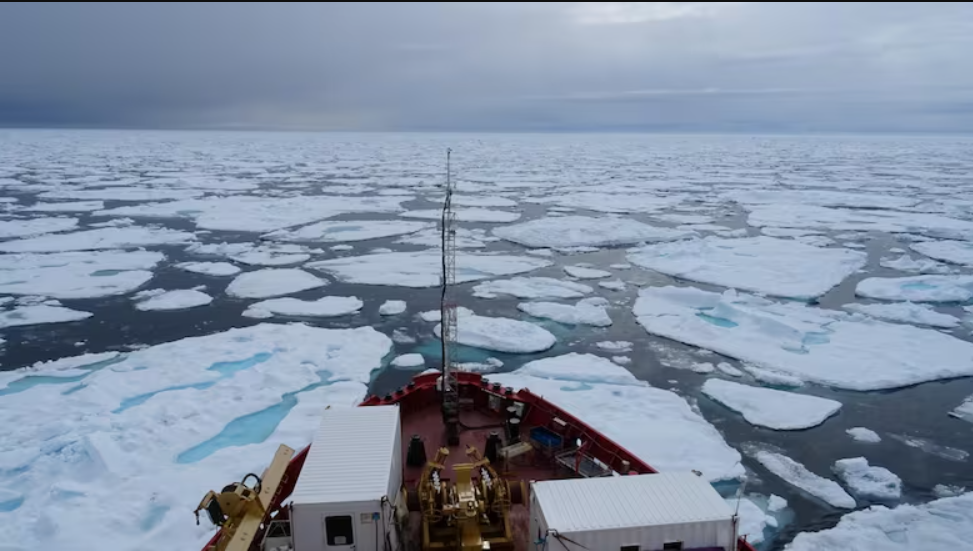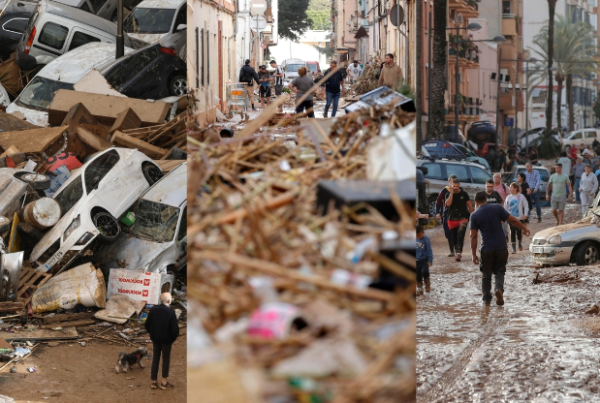
Image Credit: Alison Cook
By Malaika Mokashi. Foreign Affairs.
As temperatures continue to rise year after year, raising questions about the potential drastic consequences, the issue of climate change grows ever more pressing in today’s world.
But one effect of a warming world has secured only a small share of the spotlight: its potential changes to shipping routes. At first, the two topics may seem relatively disconnected – how could climate change possibly affect trade routes and the balance of international power? Well, the answer can be found with a quick trip to the Arctic.
Over the last four decades, the Arctic region, which refers to the land around the North Pole including Northern portions of Canada, Greenland, Iceland, Norway, Sweden, Finland, Russia, and the United States, has been facing the effects of climate change at an startling rate. A study published in 2022 estimated that the Arctic region is warming at four times the rate of the rest of the world.
The current alarming rate of temperature increase in the Arctic has led scientists to believe that, as soon as 2035, portions of the Arctic will not have ice during the summer months. These newly melted glaciers could potentially allow countries to use these ice-free waters as shipping routes, offering a more efficient way to transport goods between the United States, Europe, and Asia.
Some scientists estimate that Arctic routes could allow travel thirty to fifty percent faster than the current routes across the Suez and Panama Canals, reducing both travel time and greenhouse gas emissions.
Beyond just shipping routes, the Arctic waters could become more accommodating for tourists and cruise ships, and commercial industry could profit off of the minerals and fossil fuels that lay in abundance within the Arctic. All in all, the warming Arctic is a huge deal, not only for its potential effects on the environment but for its ability to change the international economy.
Yet, as the Arctic opens up, the regulation of these shipping routes has proven complex. While other territories like Antarctica are protected from international interference by treaties, there are few regulations on the international use and development of the Arctic. As a result, countries are racing to obtain power over these trade routes, creating new foreign competition and contention.
In 1982, the United Nations Convention on the Law of the Sea gave Arctic coastal states the authority to control Arctic shipping routes. Specifically, Article 234 gives these Arctic nations the ability to regulate maritime traffic in the Arctic as long as the Arctic continues to be covered in ice for the majority of the year.
Russia in particular has benefited from Article 234, requiring all ships that pass through the Northern Sea route to be piloted by Russians, imposing tolls on other vessels, and requiring notices for any ships passing through the route. Up until now, Russia has used the Arctic and Article 234 for its economic gain, leading most other countries to utilize alternate places of transit, like the Panama and Suez Canals, for shipping.
However, as Russian Arctic regions begin to melt, their control over this territory is likely to change. As mentioned earlier, Article 234 is only applicable so long as the Arctic is covered in ice for the majority of the year. Russia will likely attempt to continue to use Article 234 to try and retain its control over the Northern Sea Route, but as the thaw progresses, other countries across the globe may see an opportunity to challenge Russia’s holdings. They will seek to make the new shipping routes part of international waters rather than part of Russian territory.
Warming waters could lead to the use of new routes such as the Trans-Arctic Route, which does not pass through any territorial waters of the Arctic states and is instead international waters. For now, it is only navigable for nuclear icebreakers, or ships with onboard nuclear power plants that use momentum and power to break ice in glacier-laden waters. But as the Arctic warms, glaciers and ice will likely melt; by the mid-century larger ships could potentially pass through the Trans-Arctic Route.
As the dynamic of control within the Arctic begins to change, the question of national security and maintaining peace within the region will become crucial. When Russia invaded Ukraine, other countries with Arctic territory like the United States worried about the war spreading into the Arctic. As a result, the Biden administration created a National Strategy for the Arctic Region to manage national security, economic development, infrastructure development, and the environment, with a special emphasis on protecting national security.
Because of their past control of the region, Russia has a much larger military presence in the Arctic region than NATO. At the same time, China has recently shown more interest in the region, declaring itself a “near-Arctic state” in an attempt to obtain some rights in the Arctic.
Russia initially opposed China’s interference in the Arctic to protect its claims. After the war with Ukraine broke out, however, Chinese and Russian ships have been seen working together near United States-regulated waters, potentially foreshadowing future military confrontations in the region.
While countries attempt to solidify their power in the region based on climate predictions, it is important to acknowledge that these expected changes in the Arctic are still unconfirmed. There is no perfect way to predict exactly what will happen in the future, and some scientists are cautious to completely affirm that the melting Arctic will necessarily lead to the opening of Arctic shipping routes.
Some marine scientists like Alison Cook, who is part of the Scottish Association for Marine Science, question the effects of the Arctic melting. Cook argued that “It’s true that the Arctic sea ice in general is showing significant retreat and melting, and will continue to do so, but our new study shows that it’s not a simple story,”
That study, conducted by Cook and her team to analyze shipping traffic in the Arctic between 2007 and 2021, found that thin ice usually melts first from climate change, releasing older and thicker sea ice from underneath the melted thinner ice. The thicker ice can create choke points, making areas in the Arctic, such as the Northwest Passage more vulnerable to hazardous sea ice. This decreases the amount of months per year that ships can safely travel through the region.
For the time being, the future of the Arctic remains relatively uncertain. As the globe continues to heat up, the Arctic’s glaciers could potentially melt, leading to new shipping routes being exposed on international waters and changing the dynamics of foreign diplomacy away from Russia. But it’s equally possible that thick ice could continue to block Arctic shipping routes from being used more often, simply continuing the authoritative Russian control of the Northern Sea that exists today. Either way, it’s safe to say that global warming is not just changing the physical climate of the world… but also warming the political climate along with it.
Other posts that may interest you:
- NAFTA’s Dark Side, and the Bloody Link Between Economic Exploitation and Femicide
- The Decades-Long History Behind A Crumbling Canadian-Indian Diplomatic Relationship
Discover more from The Sundial Press
Subscribe to get the latest posts sent to your email.




